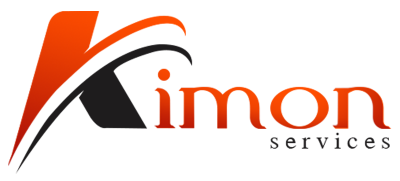In BPO operations, infrastructure optimization plays a pivotal role in driving profitability. Efficient management of BPO infrastructure directly impacts cost reduction initiatives, crucial for sustainable growth. Hidden cost killers lurk within inefficient infrastructure setups, eroding profitability silently. To combat this, embracing cost-effective technologies and best practices becomes imperative.
Streamlining BPO infrastructure costs involves strategic budget management and the implementation of efficient solutions. From reducing operational expenses to optimizing infrastructure for cost savings, every aspect contributes to financial efficiency. By prioritizing BPO infrastructure cost reduction methods, businesses can ensure long-term viability while enhancing overall efficiency and competitiveness in the outsourcing landscape.
BPO Infrastructure Cost Reduction
BPO (Business Process Outsourcing) infrastructure refers to the framework of technological and physical components that support outsourcing operations. It encompasses everything from IT systems and networks to facilities and equipment required for seamless service delivery. The significance of BPO infrastructure lies in its pivotal role in ensuring the smooth functioning of outsourced processes. A well-structured and efficient infrastructure is essential for meeting client requirements, maintaining service quality, and achieving operational objectives within the BPO industry.
Common Cost Drivers and Challenges Associated with BPO Infrastructure
Several factors contribute to the costs associated with BPO infrastructure. These include technology investments, facility maintenance, staffing, utilities, and overhead expenses. Challenges arise in managing these costs effectively while ensuring optimal performance and service delivery. For instance, rapid technological advancements may necessitate frequent upgrades, leading to increased expenses. Moreover, fluctuations in demand and resource utilization can impact cost predictability and budget management in the outsourcing environment.
Need for Proactive Cost Reduction Measures in Today’s Competitive BPO Landscape
In today’s competitive BPO landscape, proactive cost reduction measures are imperative for maintaining competitiveness and profitability. By optimizing infrastructure costs, BPO firms can enhance efficiency, maximize savings, and improve overall financial performance. Implementing cost-effective technologies, streamlining processes, and adopting best practices for expense management are essential strategies for achieving sustainable cost reduction. Moreover, investing in efficient BPO infrastructure solutions and management tools can facilitate long-term savings and operational excellence.
Outsourcing: A Strategic Approach to Cost Reduction
Outsourcing represents a strategic approach to cost reduction in BPO infrastructure management. By leveraging external expertise and resources, organizations can access specialized skills and economies of scale, leading to significant cost savings. Outsourcing infrastructure optimization tasks to experienced service providers allows BPO firms to focus on core competencies while benefiting from enhanced operational efficiency and reduced overhead costs.
Identifying Hidden Cost Killers
Hidden costs within BPO infrastructure can wreak havoc on profitability if left unaddressed. Efficient management of these costs is crucial for sustainable business growth and success. Let’s delve into the various factors contributing to hidden costs, explore how inefficiencies and outdated technologies drive up operational expenses, and provide real-world examples to illustrate their impact.
Factors Contributing to Hidden Costs in BPO Infrastructure
Effective BPO infrastructure cost reduction requires a comprehensive understanding of the factors contributing to hidden expenses. These factors often include inefficiencies, redundancies, and outdated technologies. Inefficiencies in processes and workflows can lead to increased operational costs over time. Redundant tasks or systems further compound these expenses, draining resources without providing commensurate value. Outdated technologies not only hinder productivity but also necessitate costly maintenance and upgrades.
For instance, consider a BPO company utilizing legacy software for data management. While initially cost-effective, the inefficiencies and limitations of this outdated system become apparent over time. Employees spend valuable time navigating convoluted interfaces and manual processes, leading to decreased productivity and increased operational costs.
Real-World Examples of Hidden Cost Impact
To highlight the impact of hidden cost killers on BPO profitability, let’s examine a case study involving a BPO firm specializing in customer support outsourcing. This firm neglected to optimize its infrastructure, resulting in significant hidden expenses. By implementing cost-effective technologies for BPO infrastructure, such as cloud-based solutions and automated workflows, the firm was able to streamline operations and reduce overhead costs by 20%.
Strategies for Infrastructure Optimization
Efficient BPO infrastructure management is pivotal for organizations aiming to streamline operations and maximize cost savings. By implementing strategic approaches rooted in technology modernization, resource utilization, and process automation, businesses can effectively reduce BPO infrastructure costs while enhancing overall efficiency and performance. Here’s a comprehensive guide outlining key strategies and best practices:
1. Technology Modernization: Embracing cutting-edge technologies is paramount in optimizing BPO infrastructure for cost reduction. By leveraging advanced software solutions and cloud-based platforms, organizations can minimize overhead expenses associated with traditional infrastructure setups. Additionally, investing in cost-effective technologies tailored for BPO operations ensures seamless integration and scalability, driving long-term savings and operational efficiency.
2. Resource Utilization: Efficient resource allocation plays a crucial role in lowering BPO infrastructure expenses. Implementing resource optimization techniques such as workload balancing, capacity planning, and virtualization allows businesses to maximize the utilization of existing infrastructure assets, reducing unnecessary expenditures. By analyzing data on resource usage patterns and performance metrics, organizations can identify opportunities for consolidation and rationalization, ultimately driving down operational costs.
3. Process Automation: Automating routine tasks and workflows is instrumental in streamlining BPO operations and minimizing manual intervention. Through the deployment of robotic process automation (RPA) technologies, organizations can automate repetitive processes, thereby increasing productivity and reducing labor costs. By identifying bottlenecks and inefficiencies in existing workflows, businesses can implement automation solutions to optimize resource allocation and enhance overall operational efficiency.
4. Data-Driven Decision-Making: Informed decision-making based on data insights is essential for optimizing BPO infrastructure and driving cost reduction initiatives. By leveraging analytics tools and predictive modeling techniques, organizations can gain actionable insights into infrastructure performance, resource utilization, and cost drivers. Data-driven decision-making enables proactive identification of cost-saving opportunities, facilitating strategic investments in infrastructure optimization and budget management.
5. Outsourcing: Outsourcing certain non-core functions can also contribute to BPO infrastructure cost reduction. By partnering with specialized service providers, organizations can access cost-effective infrastructure solutions tailored to their specific needs. Outsourcing allows businesses to benefit from economies of scale, expert knowledge, and streamlined processes, resulting in significant savings on infrastructure expenses while maintaining high levels of service quality.
Implementing Cost Reduction Initiatives
Stakeholder Buy-In:
- Conduct comprehensive stakeholder analysis to identify key players and their roles in the cost reduction initiative.
- Engage stakeholders early in the process to gain their buy-in and commitment to the proposed changes.
- Clearly communicate the benefits of cost reduction in BPO infrastructure, emphasizing long-term savings and improved efficiency.
- Address concerns and objections proactively, highlighting how the initiative aligns with the organization’s goals and objectives.
Strategic Planning:
- Perform a thorough assessment of current BPO infrastructure expenses and identify areas for potential savings.
- Develop a strategic plan outlining specific cost reduction goals, timelines, and responsible parties.
- Prioritize cost-saving opportunities based on their potential impact and feasibility of implementation.
- Incorporate best practices for reducing BPO infrastructure expenses, such as leveraging cost-effective technologies and implementing efficient processes.
Performance Monitoring:
- Establish key performance indicators (KPIs) to track progress towards cost reduction goals.
- Implement regular performance reviews to assess the effectiveness of cost reduction measures and identify areas for improvement.
- Utilize data analytics tools to monitor spending patterns and identify potential cost-saving opportunities.
- Communicate performance results to stakeholders regularly, highlighting achievements and addressing any challenges or setbacks.
Practical Tips for Overcoming Challenges:
- Foster a culture of continuous improvement and innovation within the organization to encourage acceptance of change.
- Provide training and support to employees affected by cost reduction initiatives to ensure successful implementation.
- Solicit feedback from stakeholders throughout the process and be willing to adjust strategies as needed.
- Celebrate successes and milestones achieved during the cost reduction journey to maintain motivation and momentum.
By following a systematic approach that emphasizes stakeholder buy-in, strategic planning, and performance monitoring, organizations can effectively implement cost reduction initiatives in BPO infrastructure. Outsourcing, when optimized and managed efficiently, can significantly contribute to lowering expenses and improving overall operational efficiency. Through careful planning and execution, businesses can achieve sustainable cost savings while maintaining high-quality service delivery.
Monitoring and Continuous Improvement
Monitoring and continuous improvement are crucial aspects of BPO infrastructure cost reduction efforts. By consistently evaluating and refining strategies, businesses can sustainably drive down costs over time while maintaining efficiency and effectiveness. Key performance indicators (KPIs) and metrics play a pivotal role in tracking the effectiveness of infrastructure optimization initiatives, guiding decision-making processes, and ensuring alignment with cost-saving goals.
Importance of Ongoing Monitoring and Evaluation
Continuous monitoring and evaluation are fundamental for sustaining cost reduction efforts in BPO infrastructure. It allows businesses to identify areas of inefficiency, pinpoint opportunities for improvement, and adapt strategies accordingly. Without ongoing monitoring, cost-saving initiatives may stagnate or become obsolete, hindering long-term financial viability and competitiveness in the market.
Key Performance Indicators (KPIs) and Metrics
To effectively track the effectiveness of infrastructure optimization initiatives, businesses should utilize relevant KPIs and metrics. These include but are not limited to:
- Cost per transaction: Measures the average cost incurred for each transaction processed within the BPO infrastructure.
- Resource utilization: Evaluates the efficiency of resource allocation within the infrastructure, including hardware, software, and human resources.
- Downtime: Tracks the amount of time the infrastructure is non-operational, directly impacting productivity and operational costs.
- Customer satisfaction: Gauges the level of satisfaction among clients or end-users, reflecting the overall quality and performance of the BPO infrastructure.
- Return on Investment (ROI): Assesses the financial returns generated from infrastructure optimization efforts compared to the initial investment.
Guidance on Refining Strategies and Making Iterative Improvements
To further drive down costs over time, businesses should focus on refining strategies and making iterative improvements. This involves:
- Identifying inefficiencies: Conduct regular audits and assessments to identify areas of inefficiency or overspending within the BPO infrastructure.
- Implementing cost-effective technologies: Explore innovative technologies and solutions tailored to optimize BPO infrastructure while minimizing expenses.
- Leveraging best practices: Incorporate industry best practices for reducing BPO infrastructure expenses, ensuring alignment with cost-saving objectives.
- Streamlining processes: Streamline operational processes and workflows to eliminate unnecessary steps and reduce overhead costs.
- Investing in training and development: Provide ongoing training and development opportunities to enhance the skills and capabilities of BPO personnel, fostering efficiency and productivity.
Conclusion
In today’s competitive business landscape, optimizing BPO infrastructure is paramount for cost reduction and overall efficiency. By implementing strategic measures in BPO infrastructure cost management, businesses can significantly lower expenses while enhancing operational performance. Outsourcing, a key component in modern business strategies, plays a pivotal role in this endeavor.
Efficient BPO infrastructure solutions leverage cost-effective technologies and best practices tailored for reducing expenses. Through meticulous budget management and streamlining operational processes, organizations can achieve substantial savings. Moreover, by embracing infrastructure optimization techniques, such as minimizing overhead and implementing financial efficiency strategies, businesses can maximize their budget allocation towards core activities.
For proactive cost reduction, it’s crucial to identify and address hidden cost killers within BPO operations. This entails thorough analysis, possibly presented in easily digestible tables for reader comprehension, to pinpoint areas for improvement. Whether it’s optimizing infrastructure costs, lowering operational expenses, or cutting down on unnecessary expenditures, proactive measures pave the way for sustainable financial health.
FAQs
How can I reduce BPO infrastructure costs?
To reduce BPO infrastructure costs, consider cloud-based solutions for scalability and pay-per-use models. Optimizing resource allocation, implementing automation, and outsourcing non-core functions can also lower expenses.
What are the best strategies for BPO cost reduction?
Implementing lean processes, renegotiating contracts, consolidating vendors, and investing in technology for efficiency are effective strategies. Regularly review and optimize operations to identify areas for improvement.
Are there tools for optimizing BPO expenses?
Yes, various tools like cost management software, process automation platforms, and analytics tools can optimize BPO expenses by providing insights into spending patterns and identifying areas for cost reduction.
How do I lower BPO overhead?
Lower BPO overhead by streamlining processes, renegotiating contracts for better rates, leveraging technology for automation, and outsourcing non-core functions to specialized providers.
Can BPO infrastructure be made more efficient?
Yes, BPO infrastructure can be made more efficient through virtualization, automation, scalability with cloud solutions, and utilizing analytics for performance optimization.
What technologies help in reducing BPO infrastructure expenses?
Technologies like cloud computing, robotic process automation (RPA), artificial intelligence (AI), and analytics tools can significantly reduce BPO infrastructure expenses by improving efficiency and scalability.
Are there cost-effective solutions for BPO infrastructure management?
Yes, leveraging cloud-based platforms, adopting virtualization technologies, outsourcing non-core functions, and investing in automation tools offer cost-effective solutions for BPO infrastructure management.
What are the benefits of minimizing BPO infrastructure costs?
Minimizing BPO infrastructure costs leads to increased profitability, better resource allocation, improved competitiveness, enhanced scalability, and agility in adapting to market changes.
How can I control BPO infrastructure spending?
Control BPO infrastructure spending by regularly monitoring expenses, optimizing resource allocation, renegotiating contracts, implementing cost-saving technologies, and aligning spending with business objectives.
What are the risks of high BPO infrastructure expenses?
High BPO infrastructure expenses can lead to reduced profitability, financial strain, decreased competitiveness, inability to invest in innovation, and dependency on costly infrastructure that may not align with business needs.






